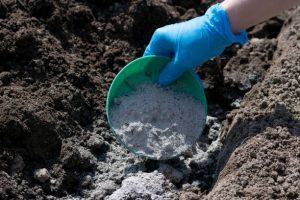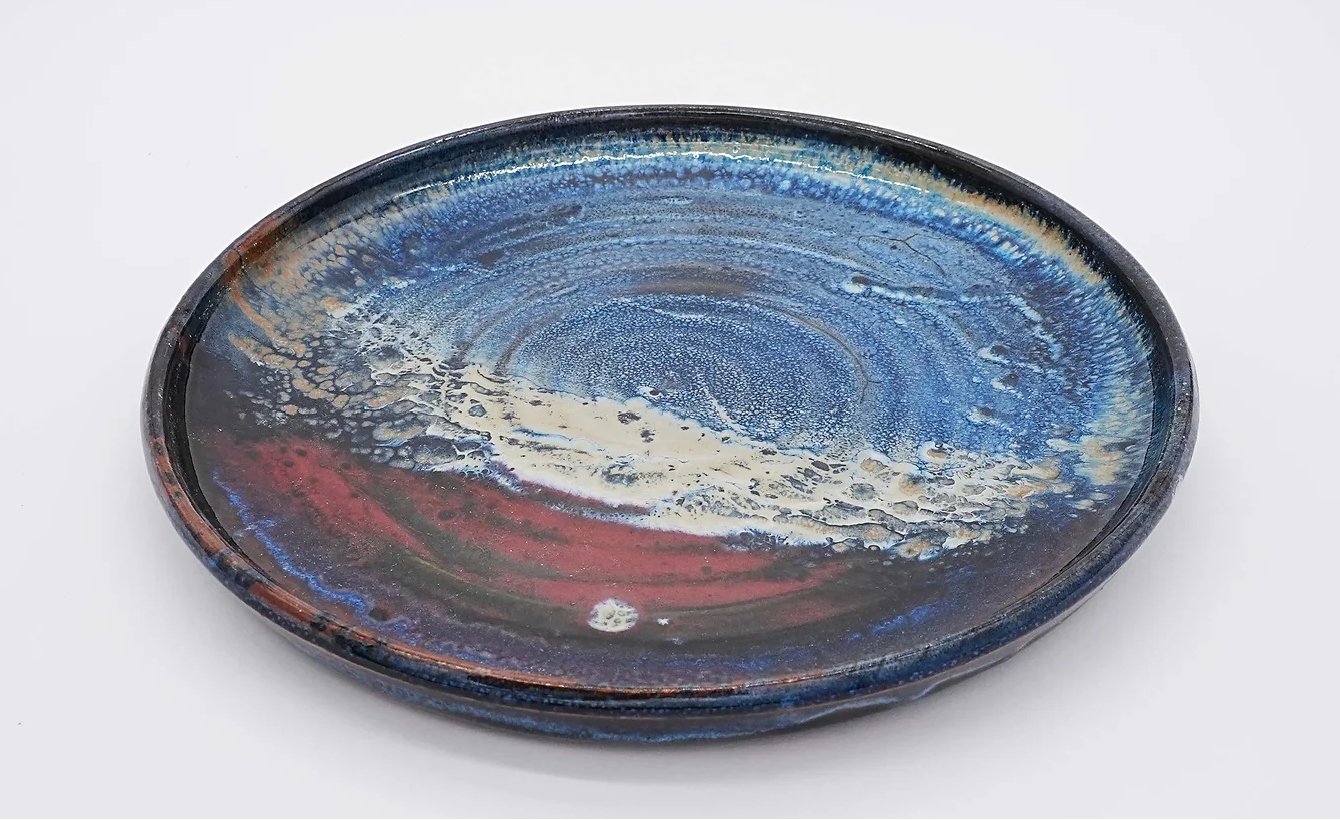Using ash beyond the studio
Contents
- Ash for the garden
- Charcoal from sieved ash
- Ash, detergents and cosmetics
- Recipe and advice for using ash detergent
Introduction
Once again, it’s time for a change! Today, our subject is not directly related to ceramics: spring naturally leads us out into the garden. We covered the use of ash in glazes in a previous article.
Here, we explore the uses of ash in our daily lives. Preparing ash is a long and tedious process. Let’s make the most of it and give this versatile material the place it deserves!
Ash for the garden
Rich in potassium and minerals, ash provides the soil with essential nutrients. It improves its fertility and promotes plant health. We recommend applying a handful per square metre, twice a year.
As with ceramic glazes, not all ashes are created equal. Their effect varies according to their origin. Hardwood ash, for example, generally contains more potassium than softwood ash. Bone ash, with high levels of phosphorus, is particularly beneficial for plant root growth and improves nutrient absorption.
Using ash to increase soil alkalinity
As ash contains alkaline material, it can correct soil acidity. You should first test your soil. Put it in a container and add a little hydrochloric acid. If the mixture froths up and bubbles form, your soil contains plenty of chalky material, and there is no need for ash. If, on the other hand, there is no chemical reaction, you can use ash in your garden.
Another way to test the soil is to measure your soil’s pH level using a test strip. On chalky soils, too much ash will raise the pH to a level that may prevent the growth of certain plants. Some, such as Mediterranean scrubland or rock garden species (lavender or sage), can withstand high pH levels. Others, such as hydrangeas, thrive on acid rather than alkaline soils.
In France, soils considered acidic are often found in forested regions, such as Brittany, the Landes, or the Auvergne-Rhône-Alpes region, as well as in mountainous areas. These acid soils often result from the decomposition of some types of leaves and pine needles. Regions with high rainfall can also find their soil become more acidic over time, as alkaline minerals leach out.
Other uses for ash in the garden
- Ash helps to repel certain pests such as slugs and snails: surround your plants with ash and pests will turn back, without suffering ill effects.
- Ash can also be used to make a solution to apply to the bark of fruit trees, protecting them from disease and insect pests. Paint it on the trunk and lower branches.
- Ashes can be spread on snow or ice: as the thaw sets in, they will disperse with the wind and rain.
- In the henhouse, ash spread on the floor absorbs moisture from droppings and combats red lice.
- Finally, ash can be used to control weeds, along pavements or in front of your home.
And for more details, we recommend the site Promesse de Fleurs.

Charcoal from sieved ash
After ash has been sieved, large lumps of charcoal remain, and are often too readily thought to be useless. Although not used in ceramics, they can find a second life in the garden. Charcoal is highly porous and has a large surface area in contact with the outside world – 1g of charcoal could cover up to 300m² if spread out. This porous structure makes it a kind of insect hotel in the soil, harbouring beneficial micro-organisms.
Placed strategically in the garden, pieces of charcoal act as shelters for pollinating insects, as well as for natural predators of pests. Charcoal also improves soil structure, increasing water and nutrient retention, making plants more resistant to drought and providing nutrients.
To stop charcoal capturing and holding on to soil nutrients, it must be ground to a fine powder. It must then be mixed with ash and potting compost to be effective. This mixture is used at the bottom of planting holes. Here’s a video to complete the story.
Ash, detergents and cosmetics
When preparing ash for glazes, it is washed with plenty of water. Both the ash and the recovered water are very useful in the home.
Ash, hygiene and cleaning products
The fine powder obtained from sieving ash can be used to create homemade cosmetics, such as toothpaste and soap. The slightly abrasive nature of fine ash facilitates gentle cleaning and polishing, while its alkaline properties promote oral hygiene. Similarly, as an ingredient in soapmaking, ash acts as a cleansing and purifying agent.

In addition, recovered water used in washing the ashes, mixed with vinegar, makes an excellent cleaner for stainless steel and copper.
Ash and skin care
Ash’s cosmetic applications include skin care. It can be incorporated into facial masks for its exfoliating and cleansing properties. Combined with natural ingredients such as honey or clay, ash can help eliminate impurities and promote a radiant complexion. All these tips can be found on the website Remèdes de Grand-Mère.
Recipe and advice for using ash detergent
Making laundry detergent from ash is a simple and environmentally friendly process. Because of its alkaline pH, this detergent also has the advantage of being antibacterial.
How it’s made
Here’s how to turn waste ash from your fireplace or wood-burning stove into an effective, natural detergent.
1. Materials required
Gather together:
- Sieved wood ash (make sure it all comes from untreated wood)
- Water
- Bucket or large container
- Filter (such as an old t-shirt or thin cloth)
- Bottle or container for storing detergent
2. Collecting and sieving the ash
- Start by collecting wood ash. It’s important to use ash from wood that has not been chemically treated, to avoid harmful residues.
- Sieve the ash to remove large pieces and bits of debris. You can use a sieve or a fine piece of cloth to do this.
3. Soaking the ash
- Place the sieved ash in a bucket or large container. For each litre of water, use about one cup (250 ml) of ash.
- Pour water over the ash and stir well. The water should completely cover the ash.
4. Standing time
- Let the mixture stand for about 24 hours. During this time, the ash will release its potash, creating an alkaline solution.
5. Filtration
- After it has stood, stir one last time and filter the solution through a fine cloth or filter. This step produces a clear, residue-free detergent.
6. Storage
- Transfer the filtered water into a clean bottle or container. Your ash detergent is ready to use.
- You can add a few drops of essential oil to scent your laundry naturally.
7. Washing
- Use this detergent as you would any liquid detergent. It’s particularly suitable for lightly soiled laundry and is safe for coloured clothes.
- Test the detergent on less sensitive fabrics before general use, especially if you’re washing delicate textiles.
Tips for using ash detergent
Here are a few tips to ensure that your washing experience is as successful as possible.
1. Test the pH of the detergent
Ash detergent has a naturally alkaline pH, which is excellent for cleaning, but the pH can vary depending on the source of the ash. Using pH test strips can help you adjust the concentration of your detergent so that it is effective without being too harsh on sensitive fabrics.
2. Prewashing heavily soiled fabrics
For particularly dirty fabrics, pre-washing or soaking in warm water can help loosen dirt before using ash detergent. This reduces the amount of detergent needed and improves washing efficiency.
3. Correct quantity
The concentration of your ash detergent may need to be adjusted. Start with a small amount and gradually increase it until you find the optimum amount for your laundry and machine. A good rule of thumb is to use around 200ml of detergent for a standard load of laundry.
4. Add natural fabric softener
If you find that your laundry comes out of the machine a little stiff, consider adding a natural fabric softener to your rinse cycle. White vinegar is a popular option that can also help remove detergent residues and soften fabrics.
5. Used alternately with other detergents
Although ash laundry is environmentally friendly, alternating its use with other detergents can help preserve the longevity of your fabrics. It also allows you to adapt to different levels of soiling and types of laundry.
6. Storage and shelf life
Store your ash detergent in a cool, dry place, out of direct sunlight. Although naturally stable, its quality may deteriorate over time. To take full advantage of its cleaning properties, use it preferably within six months after making it. Even Le Monde de Jamy has addressed the issue.
7. To make caustic soda in large quantities
We recommend you read this article (in French). You’ll find all the practical advice you need to make your own soaps, and the precautions you need to take to produce a safe product from filtered water.
Conclusion
By exploring the many facets of ash, this article invites us to re-examine our perception of materials that many consider worthless.
Beyond its usefulness in making glazes, ash is extremely versatile, with uses in the garden, detergent production and cosmetics. It attests to the unsuspected abundance of the natural resources that surround us, deepening our understanding of the expression “rising from the ashes”. Reflecting on ash prompts us to consider more broadly how other materials in our daily lives might be put to use.
And ash reminds us that, in the cycle of life, nothing is lost, everything is transformed . . .

Resource centre
animated by Matthieu Liévois,
potter-ceramist for over 40 years and founder of the Creamik School
Find all the courses
Keywords
Don’t miss any more news from the Créamik school!

















